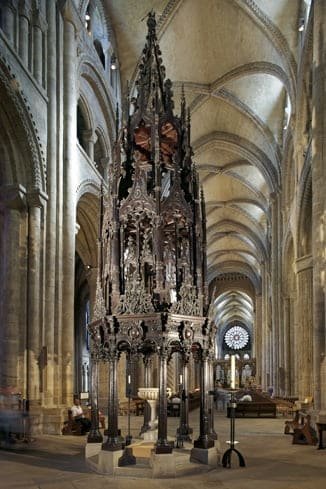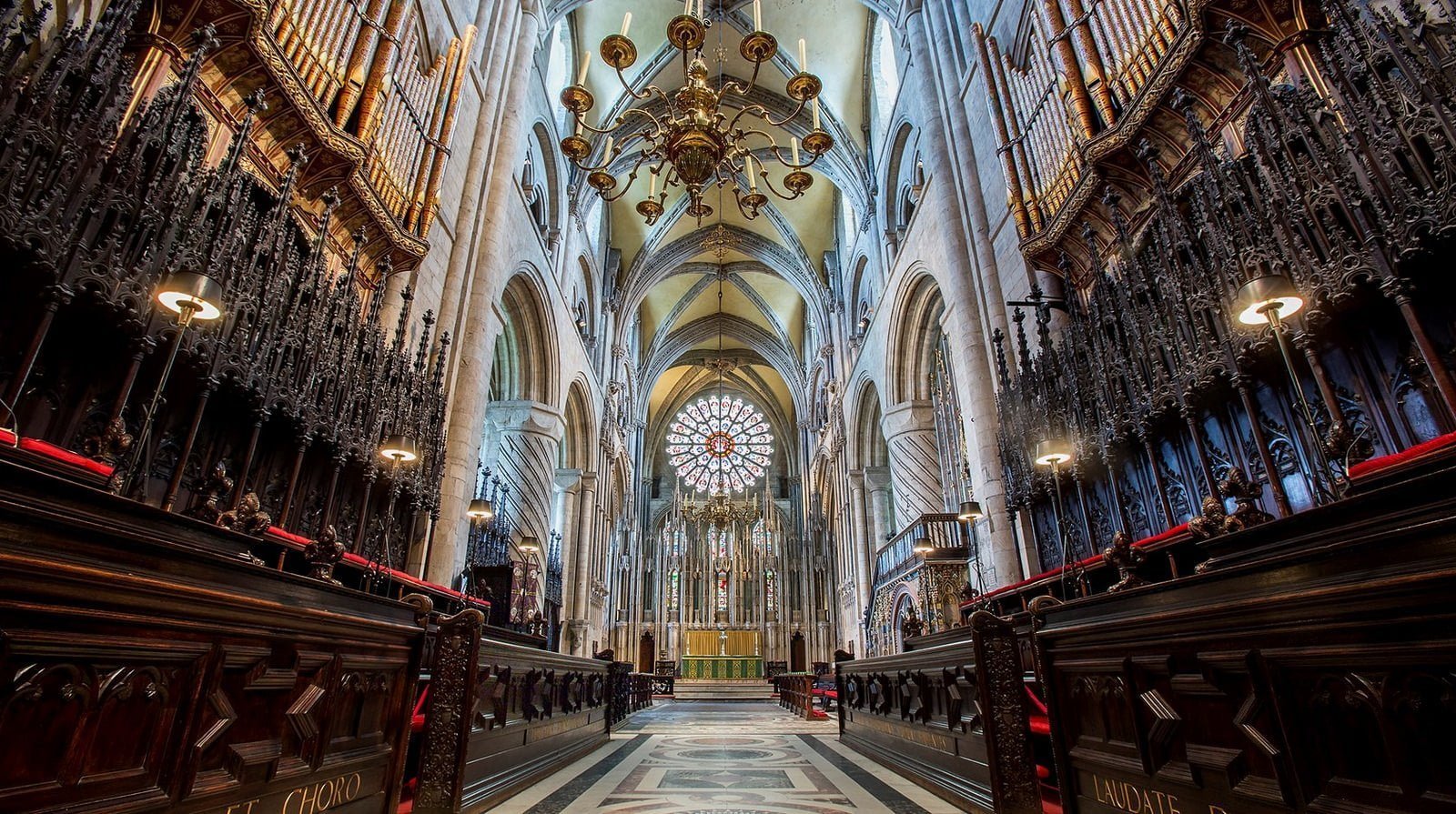Durham Cathedral was built in the late 11th and early 12th centuries It was founded as a monastic cathedral built to house the shrine of St Cuthbert, ‘Evangelizer of Northumbria’, replacing an earlier church constructed in his honour.
It attests to the importance of the early Benedictine monastic community and is the largest and finest example of Norman architecture in England. The Cathedral is widely regarded as the finest example of Norman architecture in Europe.
The innovative audacity of its vaulting foreshadowed Gothic architecture. Behind the cathedral stands the Durham castle, an ancient Norman fortress which was the residence of the prince-bishops of Durham.

The treasures, previously on display in the cathedral’s under-croft, have been in storage for the past six years. The new exhibition spaces were created in the complex of medieval buildings
Durham Castle & Durham Cathedral have been designated a UNESCO World Heritage Site.
History
On the lindisfarne there was a thriving monastery, where St. Cuthbert changed into monk, bishop and inspirational leader. He died in 687.
In 875, the priests of Lindisfarne fled the island because of Viking raiders, however they made sure to carry with them their most precious treasures, inclusive of St. Cuthbert’s miraculously preserved body and the illuminated Lindisfarne Gospels.
In 995, the Lindisfarne monks located a safe, without problems defended position above the River wear, in cutting-edge Durham.
The inspiration stone of Durham Cathedral turned into laid on August 12, 1093. The cathedral is the 0.33 church to be built at the location. The choir, transepts and nave have been constructed between 1093 and 1133. They nevertheless continue to exist of their authentic Norman (Romanesque) shape.
From 1093 to 1540the cathedral was not only the seat of the Bishop but the church of the Benedictine monastery of Durham. round 1560, after the Reformation and Dissolution of the Monasteries, the partitions of the cathedral have been whitewashed, the shrine of Cuthbert destroyed, and the stained glass home windows damaged.
The bishops of Durham had been very effective Prince-Bishops from the center a long time to the mid-nineteenth century, achieving the peak of their power in the 14th century.
They lived in Durham castle close to the cathedral. The seat of Bishop of Durham is still the fourth highest ranked within the Church of England hierarchy, and signposts for the cutting-edge-day County Durham.
Durham is known as the “Land of the Prince Bishops.”

[su_box title=”Admission”]
Free for everyone
To open Treasure:
- Adult: £7.50
- Children: £2.50
Please donate as generously as you can, so that free entry can remain.
[/su_box]
[su_box title=”Opening Hours”]
Monday 9:30 – 18:00
Tuesday 9:30 – 18:00
Wednesday 9:30 – 18:00
Thursday 9:30 – 18:00
Friday 9:30 – 18:00
Saturday 9:30 – 18:00
Sunday 9:30 – 17:30
Bank Holiday 9:30 – 18:00
[/su_box]
Official website: durhamcathedral.co.uk
Map Location
Address: The College, Durham DH1 3EH, UK
Coordinates: 54°46′25″N 1°34′34″W
